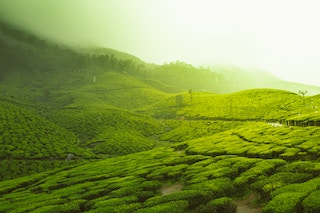Where do these effects come from?
 One relevant aspect are the chemical components of the Chinese tea, a second aspect is the aspect of growing, producing and preparing tea with all the knowledge and cultivation already contained therein – gong fu cha, the science or art of the tea. Above all, dinking tea as a Yangsheng practice – simply enjoying tea in friendly company – may add to the enlivening effects of tea drinking.
One relevant aspect are the chemical components of the Chinese tea, a second aspect is the aspect of growing, producing and preparing tea with all the knowledge and cultivation already contained therein – gong fu cha, the science or art of the tea. Above all, dinking tea as a Yangsheng practice – simply enjoying tea in friendly company – may add to the enlivening effects of tea drinking.
The most important positive components of tea concerning the Yangsheng aspect are known by science to be the following:
Fluor: the dry measure of tea contains 150-300 ppm Fluor on average (ppm being parts per million, i.e. milligram per kilogram); out of this amount only 1 ppm can be transferred into the infusion; this could have a positive effect against caries.
Caffeine (or Theine): In the dry measure of a tea, caffeine equals around 2-4% of the tea’s weight and 8-10% of its solvable part. Around 80% of the caffeine contained in the tea will thus form a part of the infusion. Caffeine is responsible for the bitter taste and can show the following effects: stimulation (or sensitization) of the central nervous system and the heart muscles, reduction of the tension of the muscles surrounding the bronchia and therefore an expansion of space for the bronchia, support of urine production, enhancement of fat catabolism. Caffeine in tea is milder in its effects than in coffee due to the different accompanying components.
Catechines: Around 10-30% of the dry measure of tea are cathechines. In the infusion, this amount accounts for 40-50% of the soluble components. Cathechines bind Caffeine in the infusion and delay the effects of caffeine. Furthermore, they are known as effective antioxidants and have an adstringent effect, i.e. pulling together wounds on the skin. Scientific research established that the chemical group of cathechines has a positive effect against tumors, bacteria, allergies and high blood pressure and supports microvascular vitality.
Flavonoide: 0,6-0,7% of the dry measure of tea – stabilizes the walls of capillaries and is effective against bad breath
Gamma-aminobutyric acid (GABA): If the tea is produced under a nitrogen atmosphere (i.e. under an oxygen-free atmosphere), GABA acids form part of the tea’s components, which are important inhibiting neurotransmitters in the central nervous system – so to say GABA is a „natural“ chemical substance which aids relaxation.
Author: Yi-Chun Hwang
Translation: Taiji Forum
Images: Taiji Forum
References: Mulian Lin (editor), 台灣的茶葉 (Tee von Taiwan), Taipei/Taiwan 2009 (ISBN 978-986-6731-43-3).
Learn more about Chinese tea

Kung Fu Cha:
Getting together to enjoy tea in a gentle way
How to drink Kung Fu Cha together
起來喫茶
